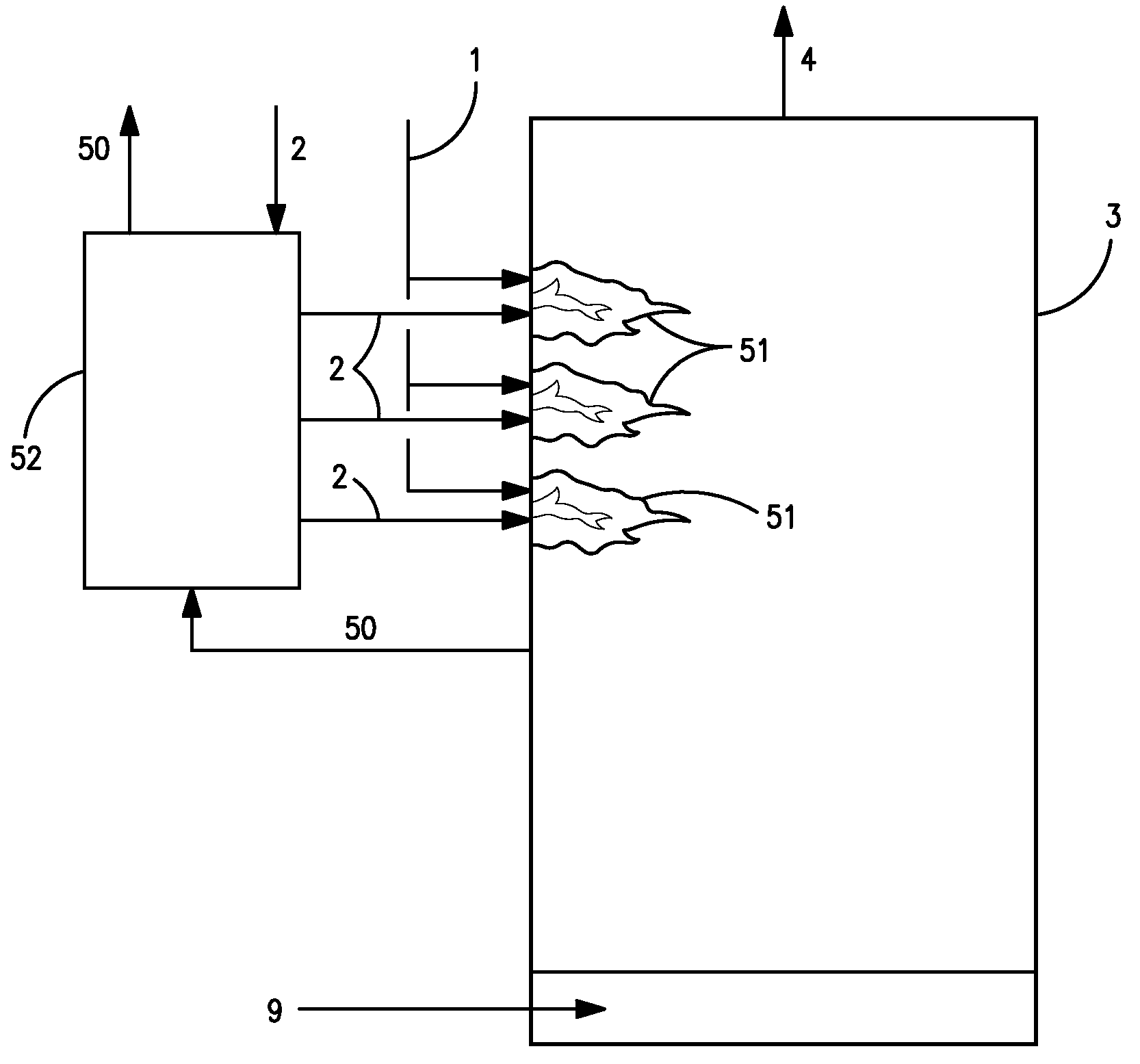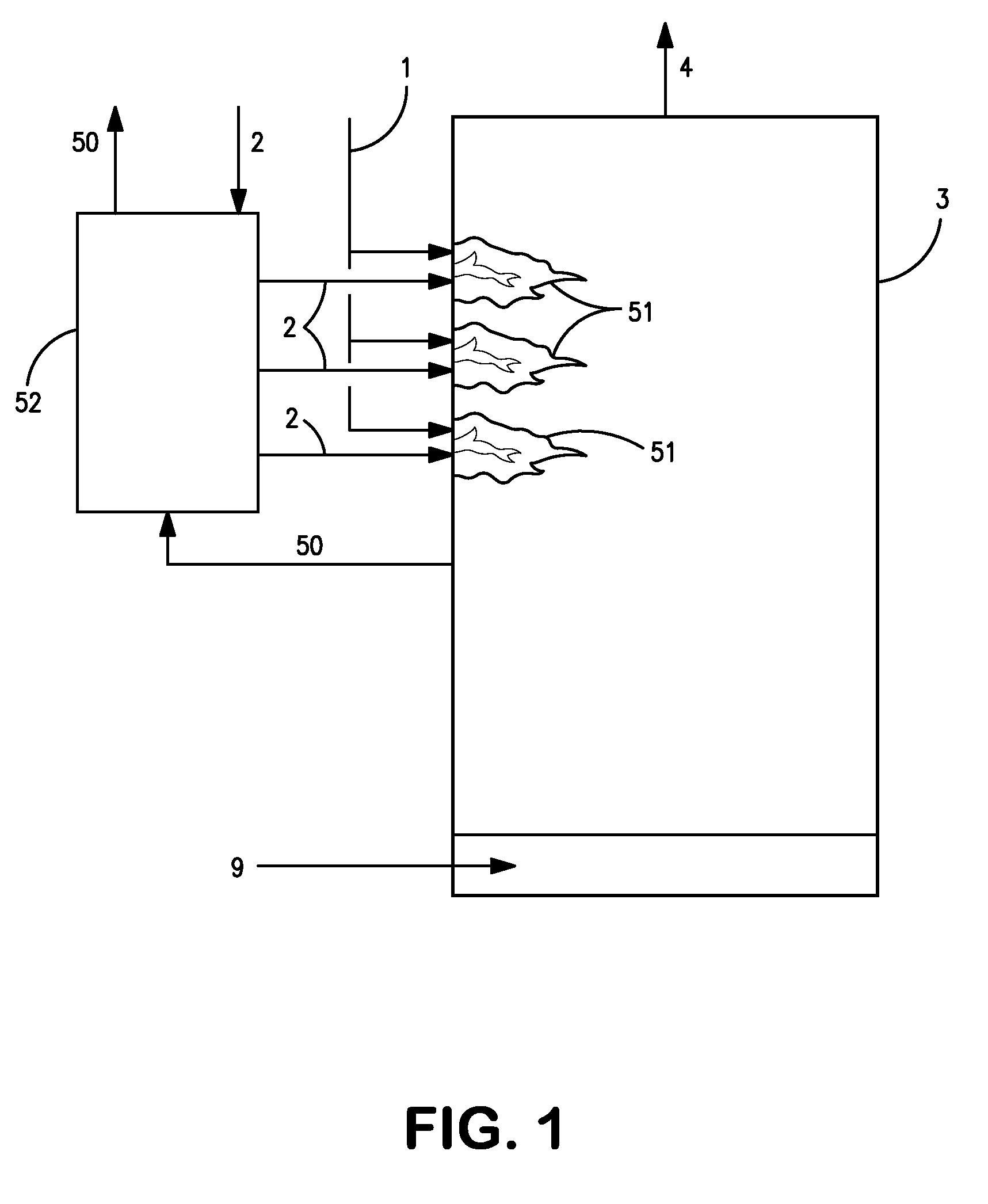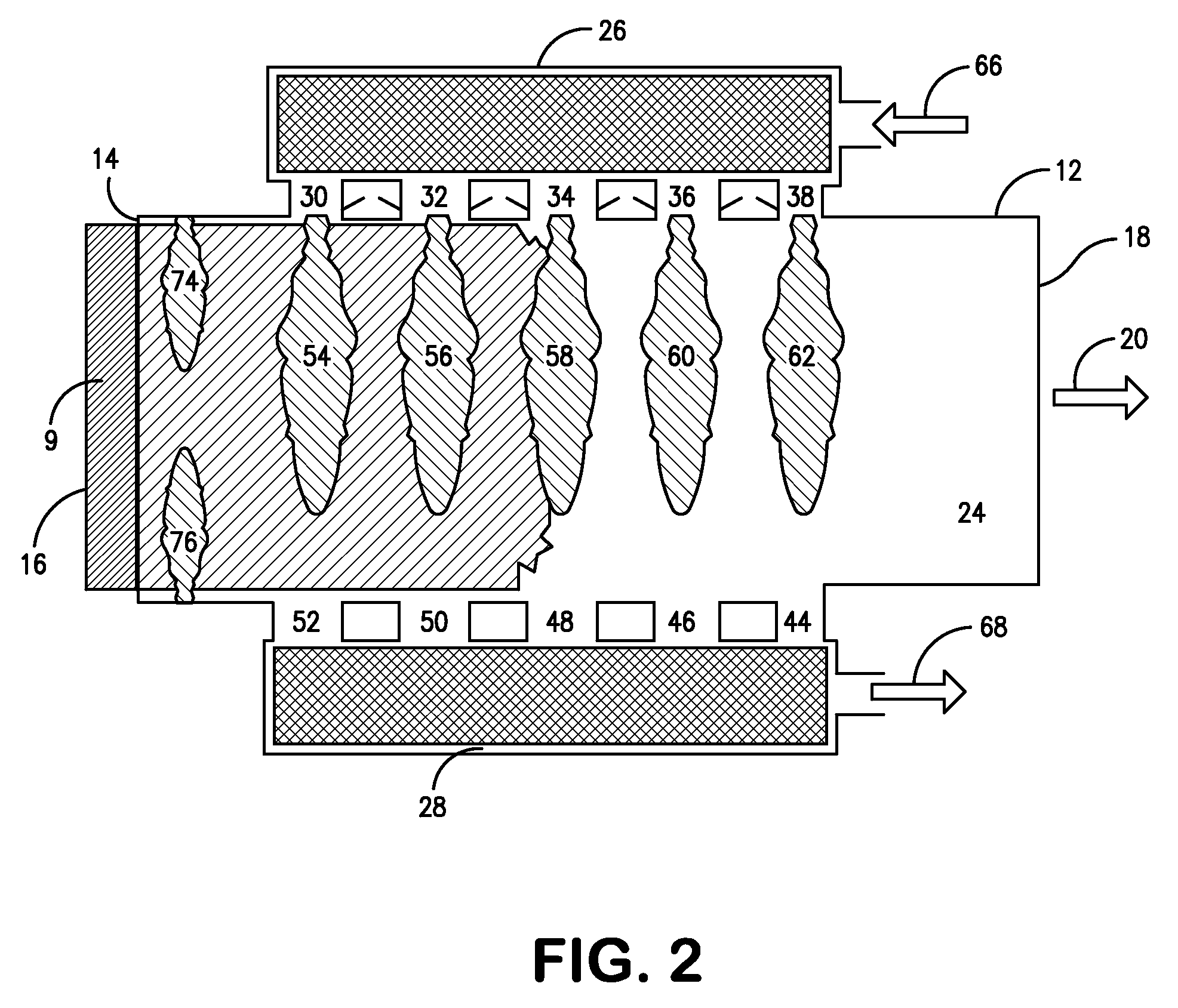Furnace with multiple heat recovery systems
a heat recovery system and furnace technology, applied in the direction of furnaces, glass rolling apparatus, lighting and heating apparatus, etc., can solve the problems of reduced throughput and even plugging of heat exchanger passages, and the maximum achievable temperature and pressure of steam is limited, so as to achieve the effect of reducing the throughput and even plugging of the heat exchanger passag
- Summary
- Abstract
- Description
- Claims
- Application Information
AI Technical Summary
Benefits of technology
Problems solved by technology
Method used
Image
Examples
example
[0055]Table 1 shows an illustrative comparison of the energy balances of (Case 1) 450 short tpd regenerative container glass melting furnace with five ports to a regenerative-type indirect heat exchanger, (Case 2) the same furnace with a conventional batch cullet preheater to preheat batch / cullet to 572° F., (Case 3) a modified 450 short tpd regenerative container glass melting with the first pair of ports converted to continuous flue ports with the present invention to preheat batch / cullet to 932° F., and (Case 4) a modified 450 short tpd regenerative container glass melting with the first pair of ports converted to continuous flue ports and the second pair of ports closed and replaced with one to two pairs of oxy-fuel burners with the present invention to preheat batch / cullet to 932° F. Table 2 shows the corresponding conditions and assumptions used for the performance of the regenerators.
[0056]A 50-50 mixture of batch and cullet is assumed in all cases. Case 1 represents the base...
PUM
| Property | Measurement | Unit |
|---|---|---|
| temperature | aaaaa | aaaaa |
| temperature | aaaaa | aaaaa |
| temperature | aaaaa | aaaaa |
Abstract
Description
Claims
Application Information
 Login to View More
Login to View More - R&D
- Intellectual Property
- Life Sciences
- Materials
- Tech Scout
- Unparalleled Data Quality
- Higher Quality Content
- 60% Fewer Hallucinations
Browse by: Latest US Patents, China's latest patents, Technical Efficacy Thesaurus, Application Domain, Technology Topic, Popular Technical Reports.
© 2025 PatSnap. All rights reserved.Legal|Privacy policy|Modern Slavery Act Transparency Statement|Sitemap|About US| Contact US: help@patsnap.com



